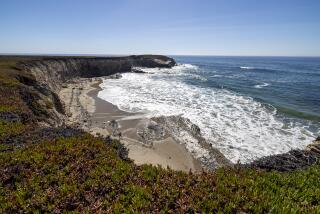Proposal Opens More of Alaska Reserve to Oil
- Share via
WASHINGTON — The Bush administration Friday proposed opening as many as 9 million acres of Alaska’s North Slope to oil and gas development, including some areas considered environmentally sensitive.
The Interior Department released a draft proposal to offer oil and gas leases in the northwestern section of the government’s National Petroleum Reserve, a vast stretch of Arctic tundra, lakes and ponds set aside in the 1920s for potential energy development.
The new document gives no preference to any of four options, but the government is expected to select a compromise that will offer large areas for drilling, while protecting some sensitive lands for environmental reasons.
A decision will be made, possibly as early as fall, on the extent of the oil and gas exploration and what areas will be protected.
The land lies west of the long-established Prudhoe Bay oil fields on Alaska’s North Slope. To the east of Prudhoe Bay is the oil-rich 1.5-million-acre coastal plain of the Arctic National Wildlife Refuge, which has been the focus of heated debate in Congress over whether to drill there.
While development of the National Petroleum Reserve, an area the size of Indiana, has generated nowhere near such controversy, environmentalists said Friday they feared the Bush leasing plan will include drilling in some sensitive areas important to birds, whales and wildlife.
Geologists believe the 23.5 million acres of the reserve may contain 6 billion to 13 billion barrels of oil, compared with 3.2 billion to 11.5 billion believed beneath the Arctic National Wildlife Refuge. But the oil in the reserve is more widely scattered and more costly to develop.
While environmentalists are adamant in blocking oil recovery operations in the Arctic refuge to the east, they concede some oil and gas development in the petroleum reserve is to be expected.
“What is needed is a balanced approach to the management of these resources across the entire North Slope to protect the most sensitive areas and cultures,” said Eleanor Huffines of the Wilderness Society.
More to Read
Sign up for Essential California
The most important California stories and recommendations in your inbox every morning.
You may occasionally receive promotional content from the Los Angeles Times.










